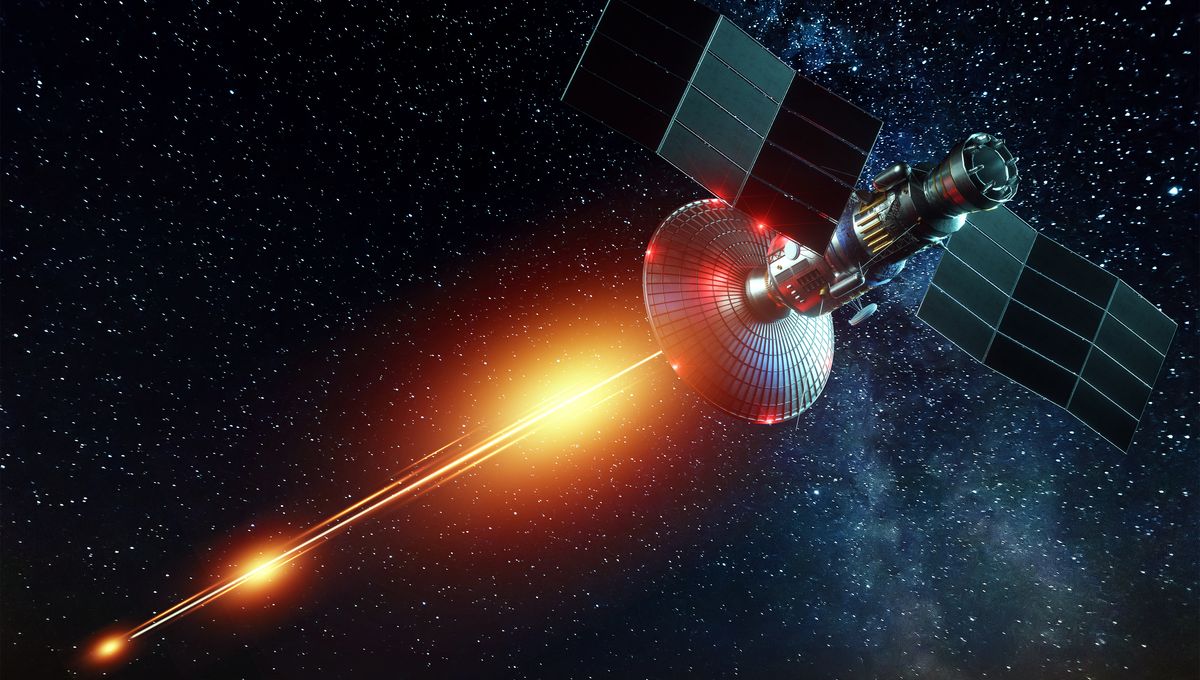
In a world first, Chinese scientists have been able to find a satellite using an infrared laser during the daytime. The approach was able to find the Tiandu-1 satellite at a distance of about 130,000 kilometers (81,000 miles) from Earth, well beyond where most satellites are located. The satellite and its twin are, in fact, orbiting the Moon.
The laser was sent from a station on Earth, bounced off a retroreflector device on Tiandu-1 (a test satellite for lunar communication and navigation), and reached Earth again in less than a second, where it was seen by the 1.2-meter telescope at the Chinese Academy of Science’s Yunnan Observatories. The Academy compares the achievement to hitting a single hair from 10 kilometers (6 miles) away.
Lasers in space are used for a variety of reasons, and this is why it is exciting that scientists have been able to test this technology at such a distance, and in particular, they have been able to make it work during the day.
NASA has used an oreo-sized retroreflector to find two craft on the surface of the Moon: India’s Vikram lander and Japan’s Smart Lander for Investigating Moon (SLIM). The laser was shot by NASA’s Lunar Reconnaissance Orbiter (LRO), which used its laser altimeter – a device to map the Moon – to find the two landers.
“LRO’s altimeter wasn’t built for this type of application, so the chances of pinpointing a tiny retroreflector on the Moon’s surface are already low,” Xiaoli Sun, who led the team that built SLIM’s retroreflector at NASA’s Goddard Space Flight Center as part of a partnership between NASA and JAXA, said in a statement.
LRO showed that tracking is a possibility using lasers on the Moon, but it was 100 kilometers (62 miles) above these landers. The dedicated system that tracked Tiandu-1 is a whole new approach, showing that this is possible to do over a distance more than 1,000 times greater.
Lasers are important in the future of long-distance communication, which one day might bring high-speed communication to Mars. Laser communications, also known as Deep Space Optical Communications (DSOC), was installed on the Psyche spacecraft, and it has been successfully tested over hundreds of millions of kilometers, delivering 100 times higher data rates than conventional radio waves.
There are limitations, however, and one of them is daylight. Hence, the excitement of a system like Yunnan Observatories’ one that can deal with the sunlight interference. DSOC is not an easily deployable system but tech might be moving in the right direction.
“The future is uncertain. [Laser communication] is not an ongoing effort and what the path forward is to developing ground infrastructure (which is critical for operations) is still a question that NASA has to grapple with and come up with sponsorship and all that,” Abhijit “Abi” Biswas, DSOC project technologist at NASA’s Jet Propulsion Laboratory, told IFLScience.
“We have lots of good ideas on how to do it. And that will be a conversation that will be held […] in the next few years. But we do not have a plan in place to say that by such and such year we’re going to have such and such infrastructure.”
Source Link: China’s New Space Laser Can Find A Satellite 130,000 Kilometers Away – Even During The Day